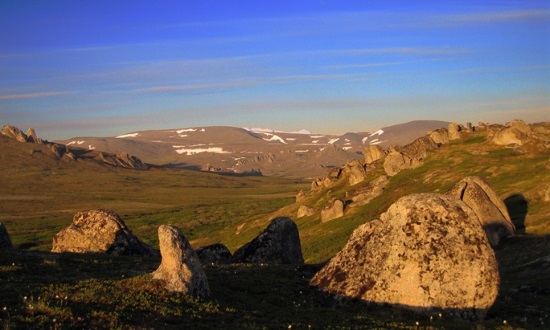The Ice Age, Land Bridges, and Migration
Adherents of old Earth geology are baffled by human migration around the world, and often propose land bridges between the continents when water levels were lower. One of the most famous is Beringia, the Bering Strait land bridge where people moved from Siberia to Alaska. However, a new study supports what creationists have been saying all along, that early humans were not stupid: some didn't wait for the ice to thaw, but went by boat.
But what of the animals? Biblical creation science models present the most plausible answer. The conditions during and after the Genesis Flood caused the Ice Age, so the ice built up and the water levels went down. Animals had a few hundred years to stroll across to the continents.
 |
| Bering Land Bridge National Preserve image credit: US National Park Service (image use does not imply site content endorsement) |
Dry land migration routes could have facilitated the movement of large animals from the Ark to remote continents. The Ice Age after the Flood provided just such an opportunity. Water stored in massive ice sheets would have temporarily lowered sea levels by 200 to 280 feet below today’s level. The resulting land bridges would have made pathways for animals to simply walk to the major continents.To read the article in its entirety, click on "The Ice Age and the Scattering of Nations".
The timing of the Ice Age was no accident. Michael Oard calculated that the glacial maximum and the simultaneous maximum drop in sea level could have been achieved within 500 years after the Flood from high ocean temperatures and a late- Flood and post-Flood period of intense volcanic activity. This timing coincides nicely with the “division” of the earth that occurred during the days of Peleg.